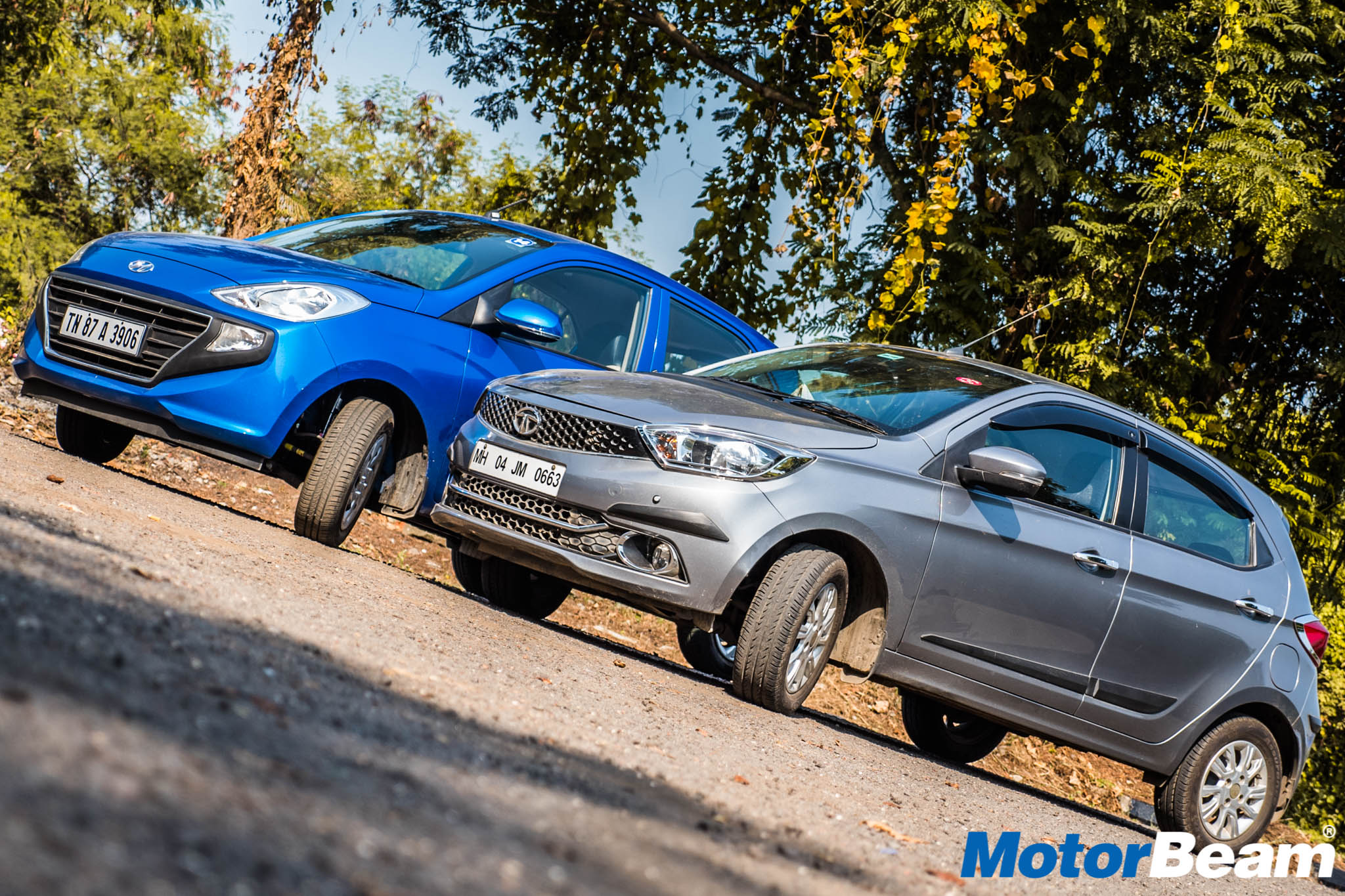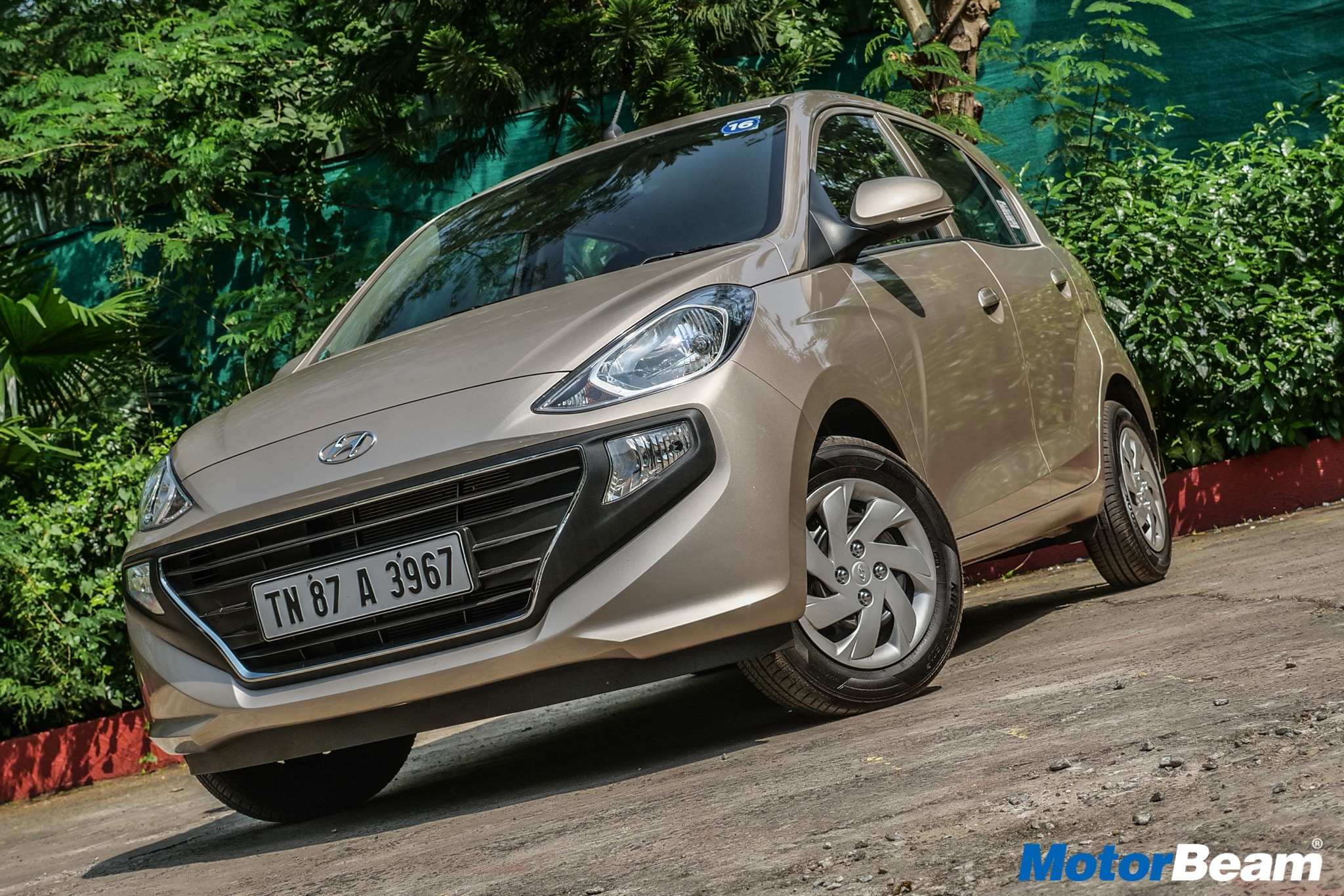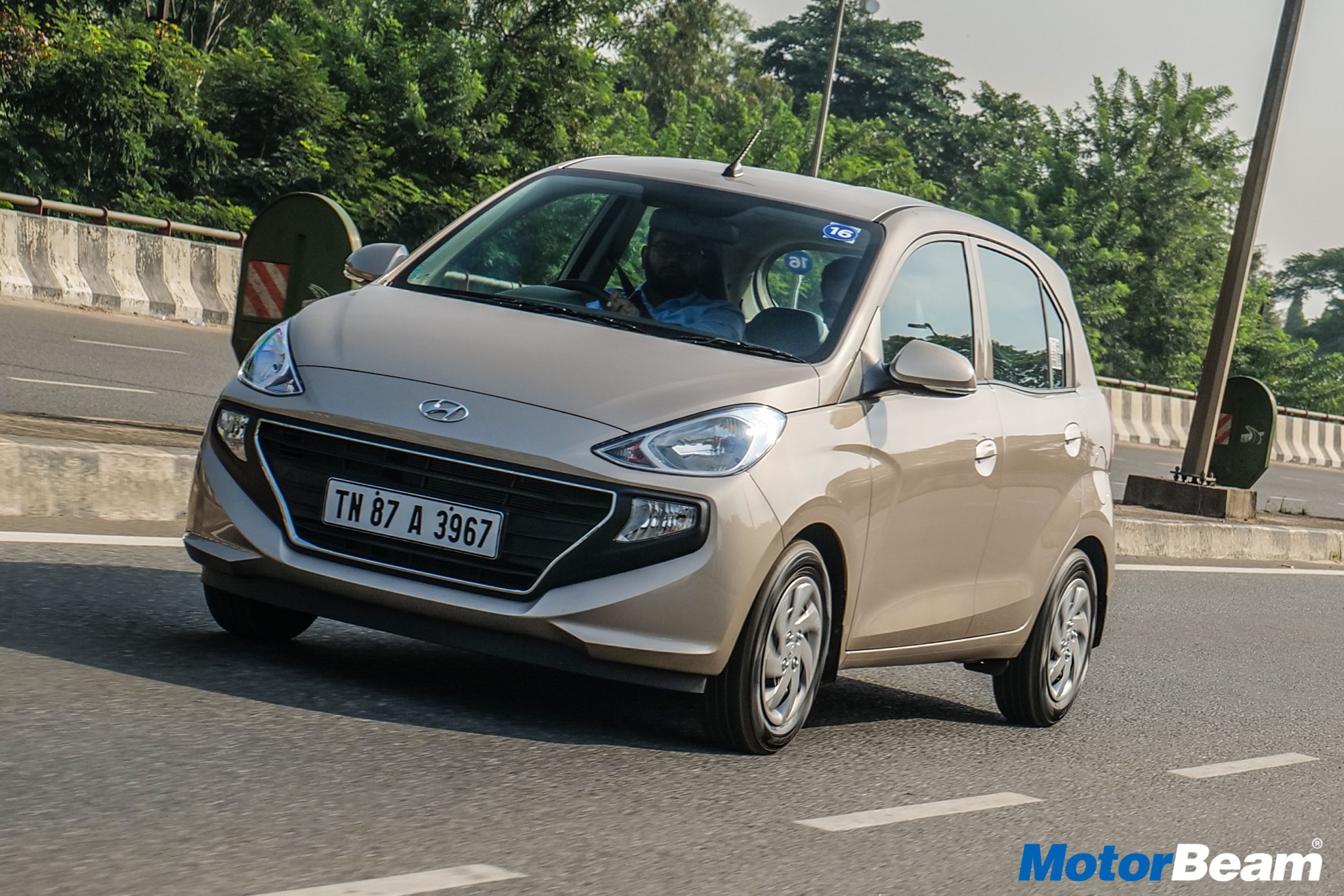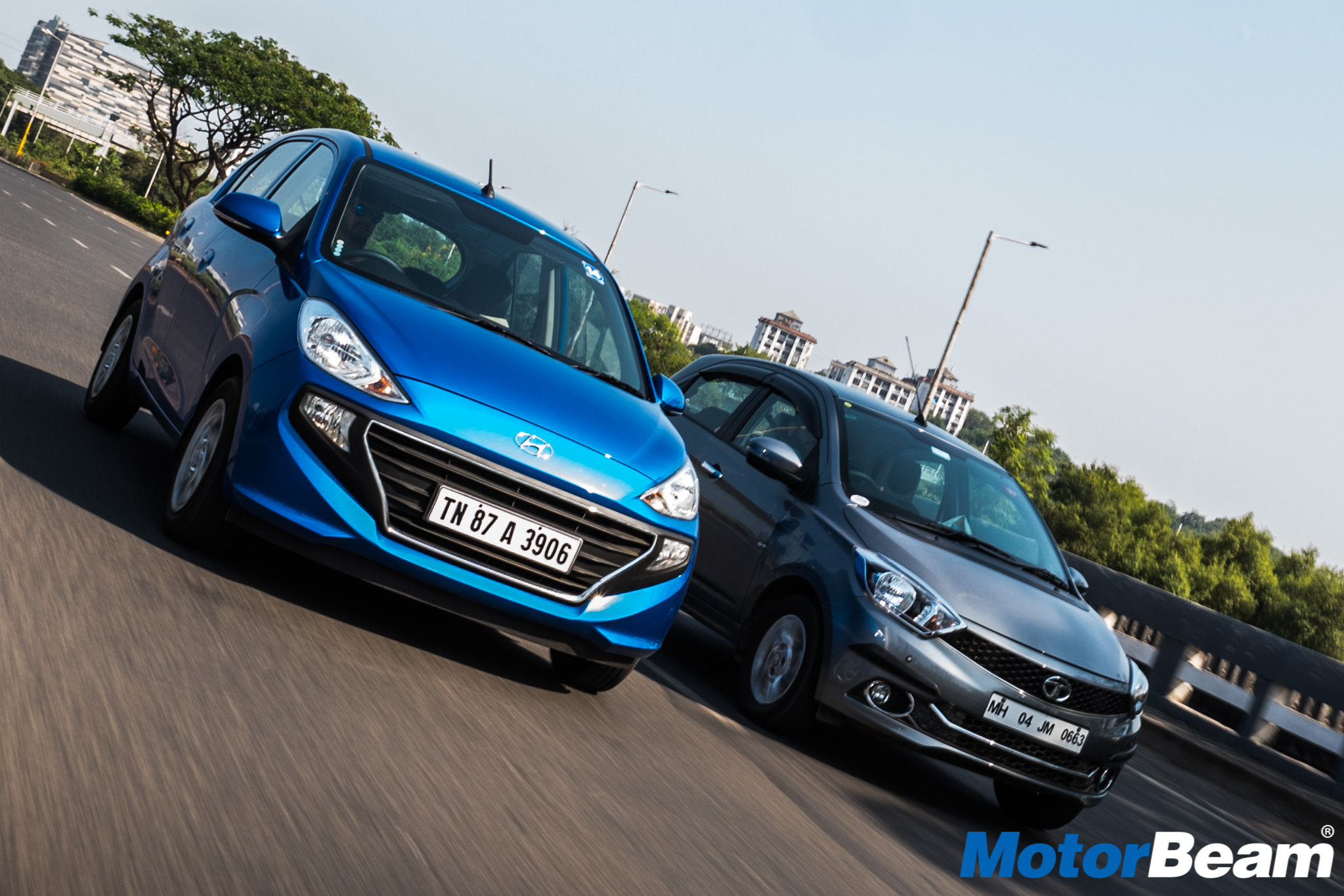
Shootout: Hyundai Santro vs Tata Tiago
Shootout No. 203
Price OTR Mumbai: Rs. 4.21 lakhs – 7.69 lakhs (Tata Tiago), Rs. 4.66 lakhs – 6.54 lakhs (Hyundai Santro)
The Hyundai Santro makes for a very good package but the Tata Tiago offers tough competition
Two decades back the Indian auto industry saw game-changers in the form of the Tata Indica and the Hyundai Santro. Small, compact, easy to drive, economical and relatively affordable, these cars appealed to the masses. Fast forward 2018, the battle is not so easy. With an ever-growing number of choices and changing consumer preferences, both Tata and Hyundai have to go the extra length to create the magic. The question is which of these cars go the farthest in replicating all that we loved about their predecessors?
Both the cars look modern and upmarket
Exteriors – The Santro looks smart and a bit European in its appearance. It does not retain the classic tall-boy proportions of the older car but it looks up to date with the times. It does have some quirky elements in its design, such as the grille which could have done with better styling. In comparison, the Tiago looks beautiful and that is despite it being much older than the Santro. The design is progressive and there is little doubt that it will age well. At times the Tiago’s brilliantly executed design makes it look much more expensive than what it actually is.
The interior of the Santro feels grown up and proper Hyundai
Interiors – The interior is where it gets significantly more difficult to pick a winner. The Tiago’s cabin is nothing short of an exceptional effort by Tata. It feels quite upmarket. The fit and finish is not outstanding but is on par with other cars in the segment. The superb textures on the dashboard and the seats and that excellent sounding Harman audio system make this a great place while grinding through the city traffic. The Santro’s interiors are no less feat either. Hyundai interiors never fail to gain accolades and the Santro is no exception. The quality of materials, fit and finish, features on offer and the general ambience is spot on and almost knocks the door of a higher segment car.
The Tiago’s cabin is well laid out and ergonomic
The cabins of both the cars feel surprisingly well appointed
The Santro gets many segment firsts including a touchscreen infotainment system with Apple CarPlay and Android Auto. In a cabin so well appointed, it is a bit of a downer though when you come across the visible cost-cutting. For instance, the power window switches are placed near the gear lever and they are not backlit making the operation quite difficult especially at night. The Hyundai logo on the steering wheel is not chrome and the aircon controls feel old and plasticky. But these are minor shortcomings in an interior that otherwise feels like a proper Hyundai. The Santro even comes with a rear AC vent which none of its rivals offers. The Tiago recently got a new XZ+ variant which comes with automatic climate control.
For their size, both these hatchbacks offer good space
In terms of space, both the cars are quite spacious and offer generous amounts of leg room. Head room in the Tiago is good but it is slightly better in the Santro due to its height. I personally found the seats of the Tiago to be better shaped than the Santro’s seats. The front seats of the Santro don’t get adjustable headrests which is a pity because the Tiago gets them. In terms of storage spaces and cubby holes, both cars are more or less similar but the boot capacity on the Santro (235-litres) is slightly lesser than the Tiago (242-litres).




